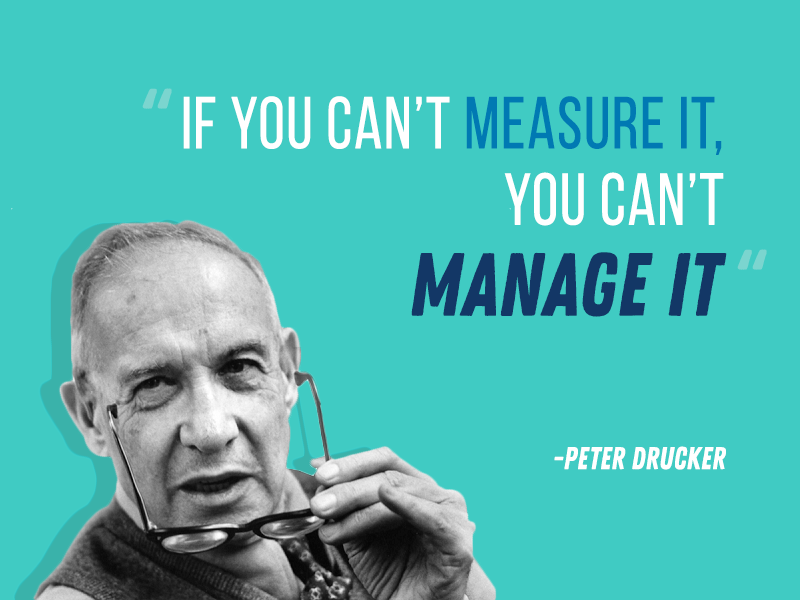
As Peter Drucker famously quipped, “if you can’t measure it, you can’t change it. Only what’s measured improves.” In this article, we focus on which metrics to consider to raise a company’s innovation-led growth prospects.
So where should one start?
First, you will want to keep an eye on the overall impact your innovation strategy will have in terms of sales. That’s why a prime metric to consider is the so-called innovation rate, the share of new revenue (growth) that comes from new value propositions (innovation).
Now, you may wish to focus on those innovations that deliver lasting impact. In other words, you will look at the survival rate, i.e., the share of new value propositions still in the business portfolio after two or three years.
The advantage of these two metrics is that any business can compute them using readily available data. In short, they are internal metrics.
Now, innovation metrics should not be scrutinised in silo.
If you operate in a highly innovative market (ex: beauty, cosmetics, electronics), you might want to gauge how well you rate versus competition. For consumer goods, Kantar publishes market-specific survival rates and Nielsen can calculate innovation rates that measure the share of market growth stemming from new value propositions.
In some sectors, it may be paramount to be perceived as more “innovative” than competition (ex: IT, automotive…). In that case, you will want to review innovation awards or receive the results of consumer surveys measuring the perception of your company “inventiveness”. Alternatively, you will want to scrutinise the “Net Promoter Score”, especially if innovation perception is predictive of consumer’s recommendation to friends and family.
The output metrics we have discussed so far will tell whether your innovation efforts bring value to the company and whether this output is in line with market trends.
Yet, these output metrics will tell you little about how replicable your company’s inventiveness is in the long run. For that, you need to consider input metrics which measure your company’s innovation culture.
As Peter Drucker also famously said, “culture eats strategy for breakfast.” A good strategy alone will not be enough to boost the number of innovations your company can bring to market.
It is your company culture that will make a difference. Innovation does not happen by magic, it implies the right process, discipline, patience, hard work and a company culture that fosters it.
Now, assessing whether a company is promoting the right innovation culture requires understanding the type of innovation it has built its growth plan on.
To boost sales, companies can focus on growing the core business. That’s what most of them do. More innovative businesses often seek to either reach out to new consumer profiles with product variants or to extend their core business through new value propositions. The most innovative leaders (e.g. start-ups) undertake to build entirely new businesses which aim to propose new value propositions to new consumer profiles. The graph below summarises these four innovation-led growth scenarios.
In the end, all scenarios work around two main variables: value propositions and consumer profiles. Will my company reach higher sales by developing new value propositions or by reaching out to new consumer profiles or both?
Now, these four innovation-led growth scenarios are mirrored by three innovation types: “existing”, “incremental” and “new”.
It’s a reminder that HOW you will reach growth directly impacts the type of inventiveness you seek.
Let’s consider a particular example to make our argument more intuitive. In a nutshell, the type of innovation will hinge on how far away the product you are developing is from the company’s existing business portfolio.
Now, once you have identified the innovation type that will spur your company’s growth, you will know whether you need an innovation or pioneer mindset to boost your staff’s ability to bring more innovations to market.
Excelling at “existing” and “incremental” innovations requires an innovation mindset within your company culture, i.e. a set of skills and tactics to:
Manage a medium level of risk & uncertainty in financial returns;
Pull your teams out of their comfort zone & daily routines;
Measure opportunities at the right moment in the innovation process.
Businesses that excel at “new” category innovation projects have usually established a pioneer mindset within their company culture, i.e. a set of skills and tactics to:
Manage a higher level of risk & uncertainty, including long-term financial expectations that can include profit dilution;
Enable a work environment which values getting into the unknown, while having leadership ready to step in and tone it down when needed;
Build the patience and open-mindedness to keep new ideas alive longer in the innovation funnel.
The grail is obviously to find the relevant input metrics – on which you have control – that will help you foster the culture your company needs to deliver on its innovation and growth prospects. To uncover such bespoke input metrics, one must first answer the following three questions:
In a nutshell, output metrics will tell you whether your innovation efforts bring – lasting – value to the company (internal) and whether this output is in line with market trends (external).
Input metrics will guide you in improving the company culture that will make your company’s inventiveness more replicable over time.